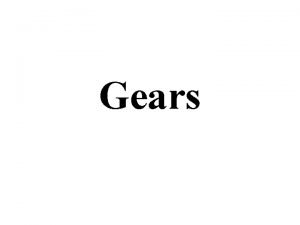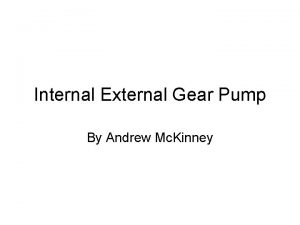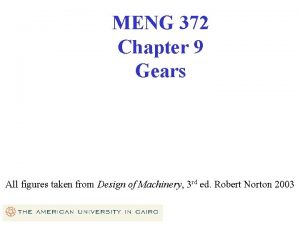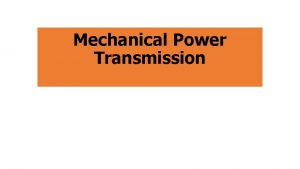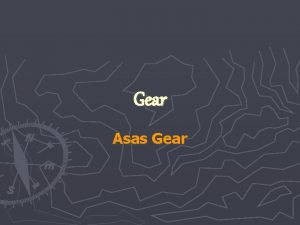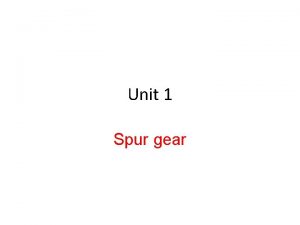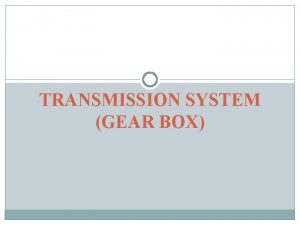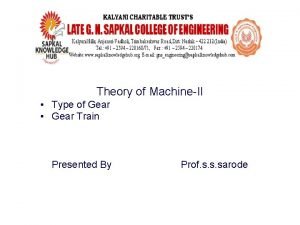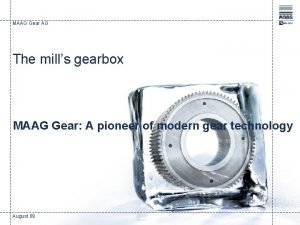Gear Systems 1 2 3 4 5 Gear










- Slides: 10

Gear Systems 1. 2. 3. 4. 5. Gear Trains Chain-Sprocket systems Worm and Worm-gear Systems Friction-Gear (toothless)Systems Belt and Pulley Systems P 115

1. Gear Trains: two or more toothed gears that mesh with each other; includes gear boxes that we’ve already studied. Example 1: Try to identify where these would be found. ___________ Example 2: Calculate the velocity ratio for the following. Note that the “driver” gear is the input. p 116

2. Chain-Sprocket Systems: toothed gears connected by a chain Example 1: What advantage does this system have over a gear train? p 117

3. Worm& Worm-gear System: The input gear is a screw-like “worm”, and the output is one or more toothed gears known as worm-gears. It’s not reversible. Example 1: Which part do you think turns very easily? Example 2: If the velocity ratio is low, what can be said about the mechanical ratio? p 118

4. Friction-Gear (toothless)Systems: like a gear train without the teeth Example 1: The two wheels(‘gears”) are made out of iron. What makes them stick together? p 119

5. Belt and Pulley Systems: has pulleys that include grooves that allow the belt to fit. Example 1: What makes this system different from a chain-sprocket system? Example 2: What is the mechanical ratio of this system? Velocity ratio? p 120

More Examples 1. a) This is part of a snow blower. What type of gear system is this? b) Name the input. (what type of gear is this? ) c) If you try to turn the chute manually, why is that a bad idea? p 121

2. Which systems show the real motion? p 122

3. a) Calculate the velocity(speed) ratio if the larger one is the input. b) What kind of systems are these, assuming no teeth on the gears? p 123

4. 5. p 124
